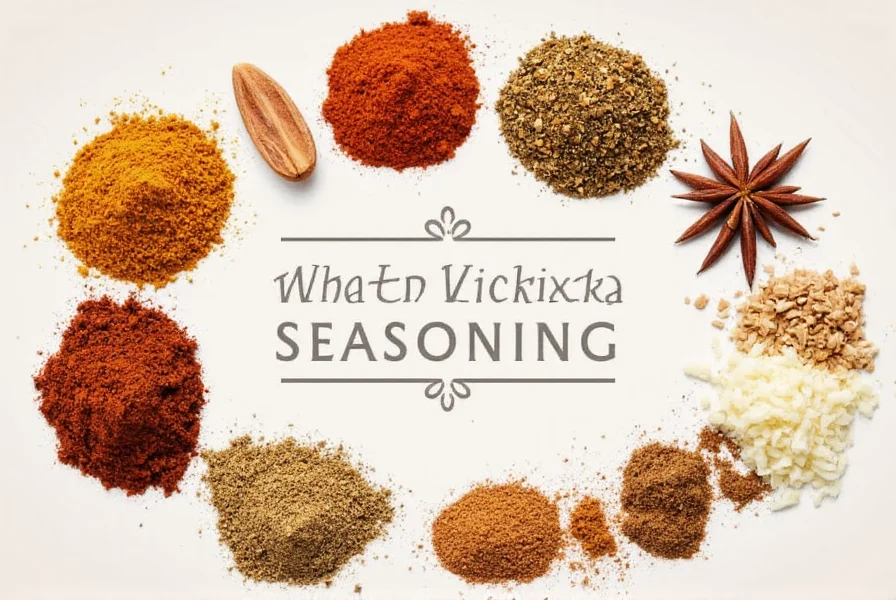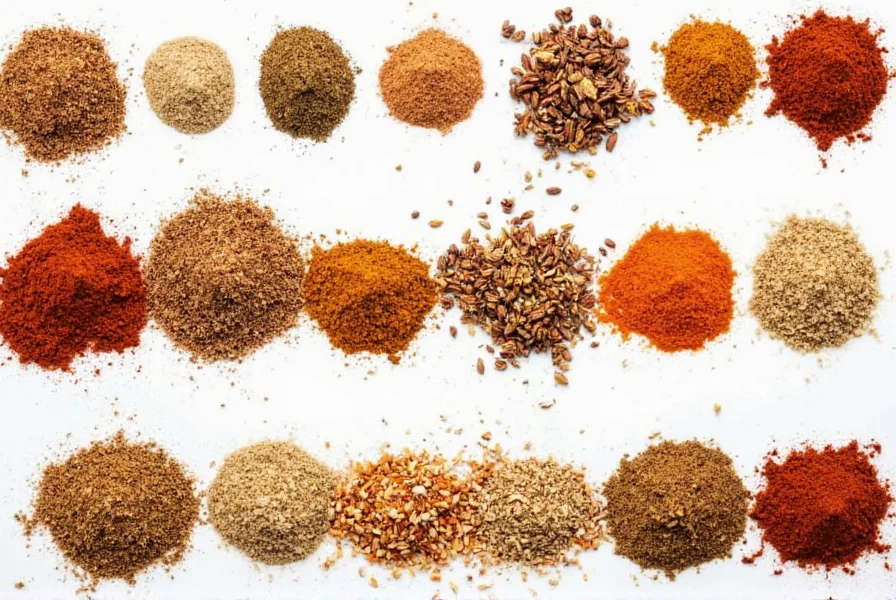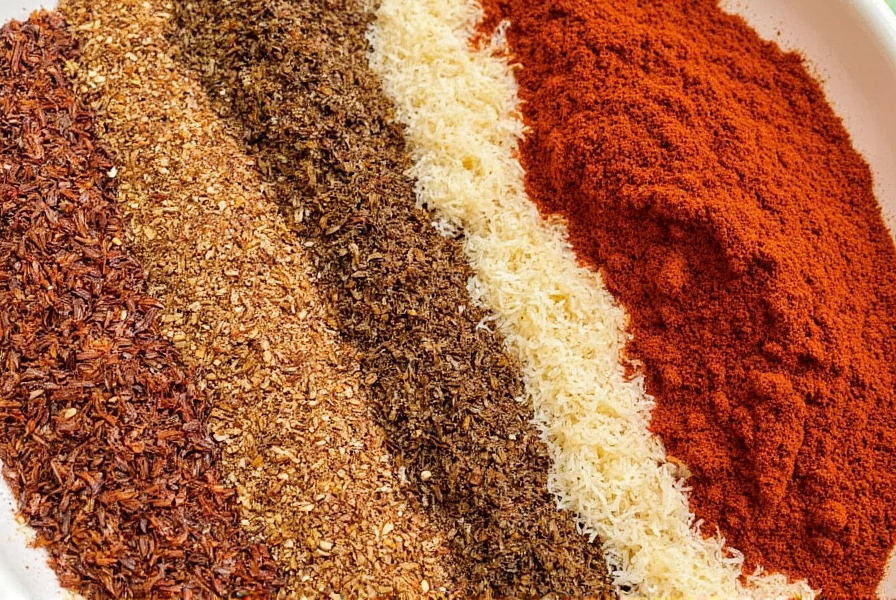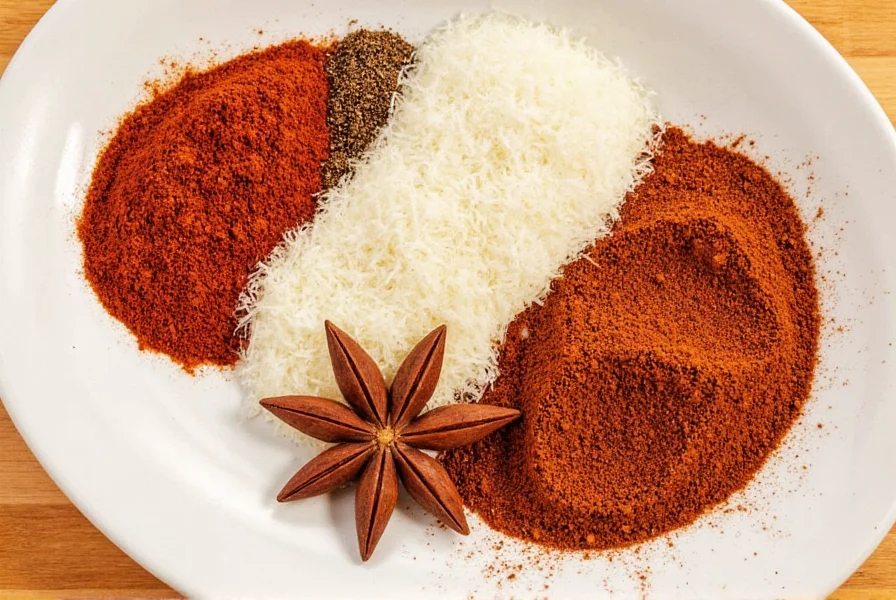What Spices Are in Fajita Seasoning?
Fajita seasoning is a blend of spices commonly used in Mexican cuisine to add bold, smoky, and slightly spicy flavors to grilled meats and vegetables. The essential spices in fajita seasoning include:
- Cumin
- Paprika
- Chili powder
- Oregano
- Garlic powder
- Onion powder
- Black pepper
| Spice | Flavor Profile | Role in Fajita Seasoning |
|---|---|---|
| Cumin | Earthy, nutty, slightly smoky | Provides the base flavor and depth |
| Paprika | Smoky, sweet, mild | Enhances color and adds warmth |
| Chili Powder | Spicy, smoky, slightly sweet | Brings heat and complexity |
| Oregano | Pungent, earthy, slightly bitter | Adds a fresh, herbal note |
| Garlic Powder | Savory, pungent, aromatic | Boosts umami and enhances other flavors |
| Onion Powder | Sweet, savory, concentrated | Complements garlic and adds depth |
| Black Pepper | Pungent, sharp, slightly hot | Adds a kick and balances sweetness |

These spices work together to create a balanced, rich flavor that pairs perfectly with grilled chicken, beef, or vegetables. Some commercial mixes may also include salt, cornstarch (to prevent clumping), or other additives depending on the brand.
Top 5 Practical Tips for Using Fajita Seasoning
- Use it on meat and veggies alike: Don't limit yourself to just chicken or steak—try it on bell peppers, onions, zucchini, or even tofu for a vegan twist.
- Adjust the heat level: If you want a spicier version, add more chili powder or cayenne pepper. For milder, skip the chili or use sweet paprika instead.
- Make your own blend: Customizing your seasoning gives you full control over the flavor. Mix cumin, paprika, oregano, garlic, and onion powders to start, then tweak to taste.
- Use it as a rub or a dry mix: You can apply it directly to meat before grilling, or mix it into a paste with oil and lime juice for a wet marinade.
- Pair it with citrus: Lime or lemon juice helps brighten the flavors and cut through the richness of the spices.

Frequently Asked Questions About Fajita Seasoning
What are the essential spices in fajita seasoning?
The essential spices in fajita seasoning include cumin (for earthy depth), paprika (for smoky warmth), chili powder (for heat), oregano (for herbal notes), garlic powder, onion powder, and black pepper. These spices work together to create the characteristic bold, smoky flavor profile that defines authentic fajita seasoning.
How is fajita seasoning different from taco seasoning?
While both seasoning blends share some common ingredients like cumin, chili powder, and garlic, fajita seasoning typically has a higher proportion of paprika for that distinct smoky flavor and often includes more black pepper. Taco seasoning tends to be more cumin-forward with additional ingredients like coriander and sometimes cayenne for more heat. Fajita seasoning is specifically designed to complement grilled meats and vegetables, while taco seasoning works better for ground meat fillings.
How much fajita seasoning should I use per pound of meat?
For best results, use 1-2 tablespoons of fajita seasoning per pound of meat. Start with 1 tablespoon if you're new to the blend, then adjust to taste. For a more intense flavor, let the seasoned meat marinate for at least 30 minutes (or up to 24 hours for tougher cuts) before cooking. Remember that homemade blends may require slightly more seasoning than commercial blends that often contain salt and fillers.
Elevate Your Cooking with the Right Spice Mix
Understanding the spices in fajita seasoning opens up culinary possibilities. Whether using store-bought or homemade blends, the combination of cumin, paprika, chili powder, oregano, garlic, and onion powders forms the foundation of this beloved seasoning. With the right techniques, you can take your dishes to the next level.












 浙公网安备
33010002000092号
浙公网安备
33010002000092号 浙B2-20120091-4
浙B2-20120091-4